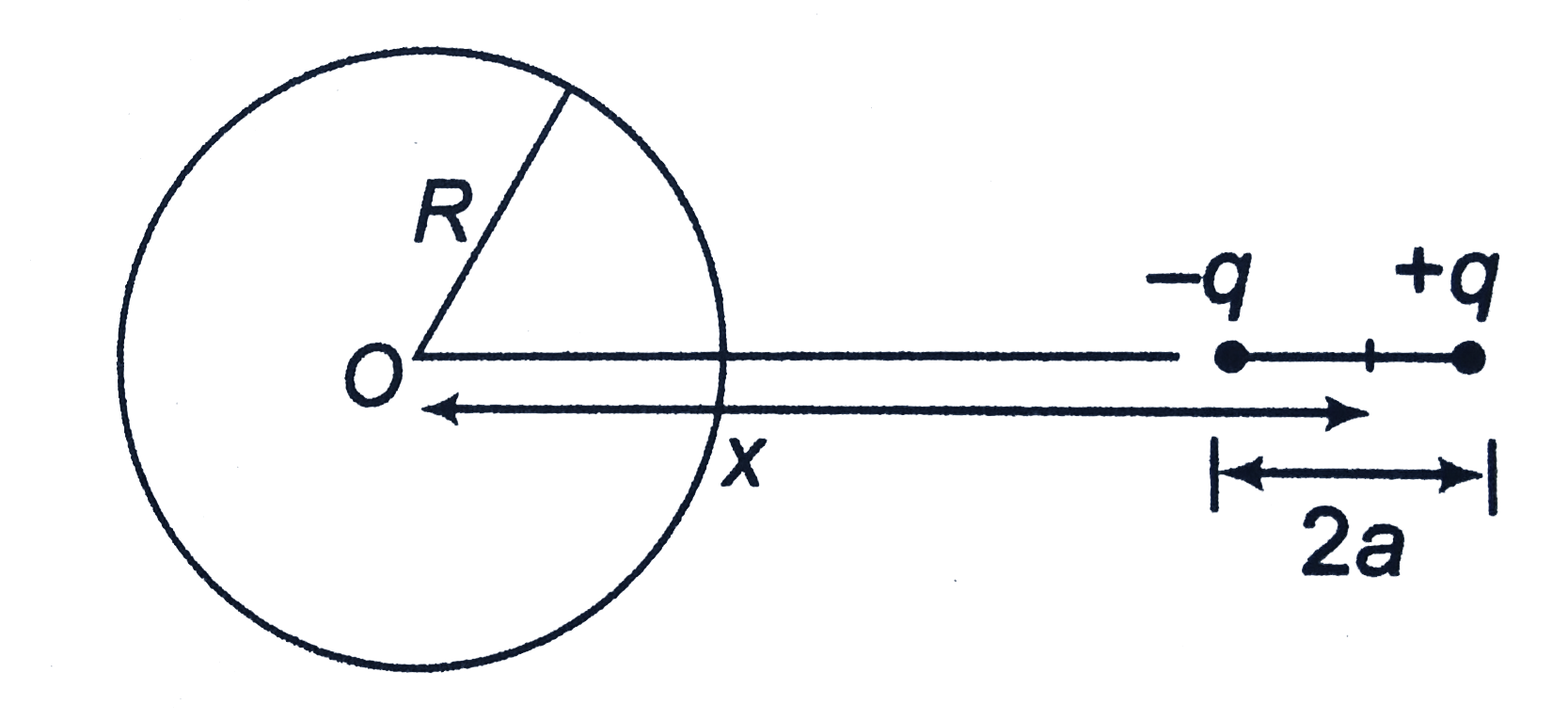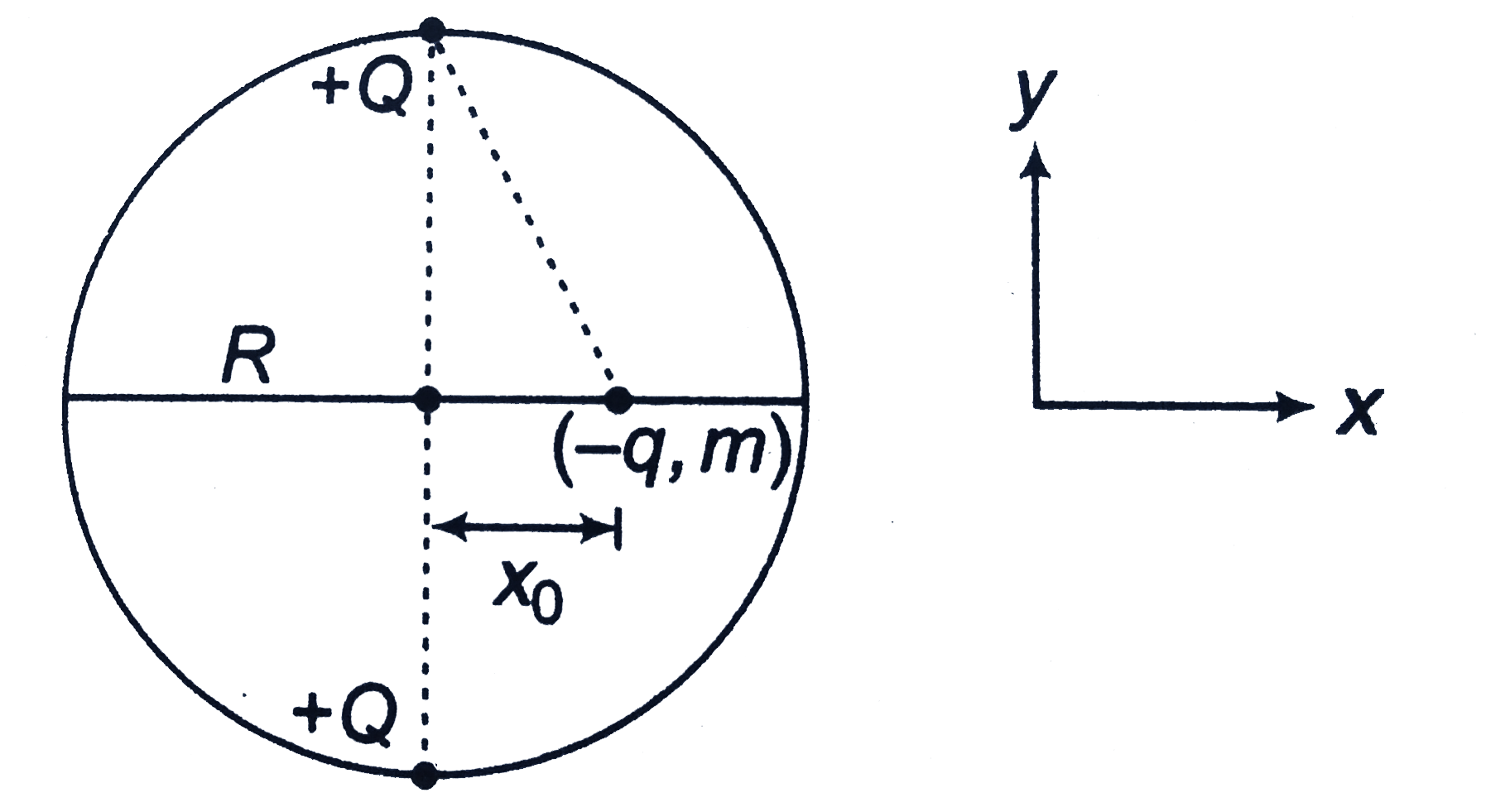Complete Solutions to SUBJECTIVE_TYPE of chapter ELECTROSTATICS of Class 12 book with complete answers and questions
| Class 12 | PHYSICS |
| Chapter | ELECTROSTATICS |
| DC PANDEY | SUBJECTIVE_TYPE |
| Number Of Questions | 6 |
| Academic Year | 2023-24 |
Eight point charges of magnitude Q are arranged to form the corners of a cube of side L. The arrangement is made in manner such that the nearest neighbour of any charge has the opposite sign. Initially, the charges are held at rest. If the system is let free to move, what happens to the arrangement? Does the cube-shape shrink or expand? Calculate the velocity ct each charge when the side-length of the cube formation changes from L to nL. Assume that the mass of each point charge is m.
View SolutionA proton of mass m and accelerated by a potential difference Vgets into a uniform electric field of a parallel plate capacitor parallel to plates of length 1 at mid-point of its separation between plates. The field strength in it varies with time as E = at, where a is a positive constant. Find the angle of deviation of the proton as it comes out of the capacitor. (Assume that it does not collide with any of the plates.)
View SolutionTwo concentric rings placed in a gravity free region in yz-plane one of radius R carries `a + Q` and second of radius `4R` and charge `–8Q` distributed uniformly over it. Find the velocity with which a point charge of mass m and charge `+q` should be projected from a a distance `3R` from the centre of rings on its axis so that it will reach to the centre of the rings.
View SolutionAn electric dipole is placed at a distance x from centre O on the axis of a charged ring of R and charge Q uniformly distributed over it.

(a) Find the net force acting on the dipole.
(b) What is the work done in rotating the dipole through `180^@`?
View SolutionThree concentric, thin, spherical, metallic shells have radii 1, 2, and 4 cm and they are held at potentials `10, 0` and `40 V` respectively. Taking the origin at the common centre, calculate the following:
(a) Potential at r = 1.25 cm
(b) Potential at r = 2.5 cm
(c) Electric field at r =1.25 cm
View SolutionA thin insulating wire is stretched along the diameter of an insulated circular hoop of radius R. A small bead of mass m and charge –q is threaded onto the wire. Two small identical charge +Q are tied to the hoop at points opposite to each other, so that the diameter passing through them is perpendicular to the thread (see figure). The bead is released at a point which is a distance x_0, from the centre of the hoop. Assume that `x_0 < R. `

a. What is the resultant acting on the charged bead?
b. Describe (qualitatively) the motion of the bead after it is released.
c. Use the assumption that `x//Rltlt1` to obtain an approximate equation of motion and find the displacement ad velocity of the bead as functions of time.
d. When will the velocity of the bead will become zero for the first time?
View Solution
SUBJECTIVE_TYPE questions and complete solutions for chapter ELECTROSTATICS of DC PANDEY ENGLISH of Class 12
All Exercises from DC PANDEY Class 12 PHYSICS ELECTROSTATICS
- Assertion and Reason
- Check point 1.1
- Check point 1.2
- Check point 1.3
- Check point 1.4
- Check point 1.5
- Example
- Example Type 5
- Example Type 6
- Example Type 8
- Exercise 24.1
- Exercise 24.2
- Exercise 24.3
- Exercise 24.4
- Exercise 24.5
- Exercise 24.6
- Exercise 24.7
- Level 1 Assertion And Reason
- Level 1 Objective
- Level 1 Subjective
- Level 2 Single Correct
- Match the columns
- Medical entrances gallery
- SUBJECTIVE_TYPE
- Taking it together